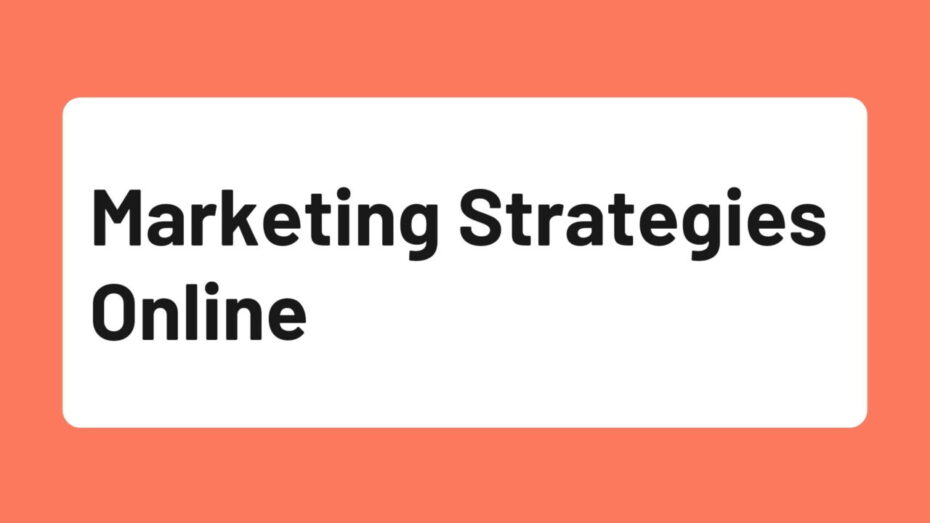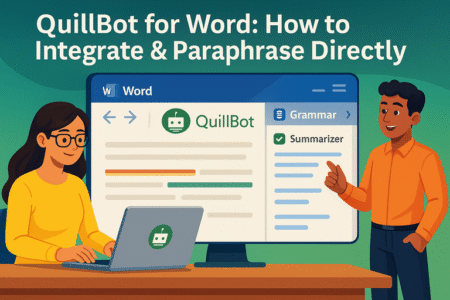Table of Contents
Discover effective marketing strategies to make money online with practical and actionable tips. Learn how to optimize your digital presence and boost your revenue.
Proven Marketing Strategies for Online Success
Did you know that 93% of online experiences begin with a search engine? This underscores the importance of effective marketing strategies to drive traffic and generate revenue. By implementing proven techniques, you can significantly enhance your online presence and achieve business success.
Marketing strategies online involve a multifaceted approach that includes social media, email marketing, content creation, SEO, and more. Each strategy plays a crucial role in attracting, engaging, and converting potential customers. To make money on the internet, it’s essential to understand and apply these strategies effectively.
Most importantly, I suggest focusing on methods that align with your business goals and target audience. Different strategies work for different niches, so it’s crucial to tailor your approach accordingly. By doing so, you’ll maximize your chances of success and build a sustainable online business.
Utilizing Social Media for Brand Awareness
Social media platforms have over 3.6 billion users worldwide, making them a goldmine for brand awareness. By leveraging social media marketing strategies, you can reach a vast audience and establish a strong online presence.
To begin with, engage with your audience on popular platforms such as Facebook, Instagram, and Twitter. Create and share compelling content that resonates with your target demographic. Interactive posts, such as polls, quizzes, and live videos, can drive higher engagement and foster a sense of community around your brand.
I believe consistency is key when it comes to social media marketing. Regularly posting and interacting with followers keeps your brand top-of-mind. Additionally, using relevant hashtags and participating in trending conversations can increase your visibility and attract new followers.
Moreover, my recommendation is to utilize social media analytics tools to track your performance. By analyzing metrics like engagement rates, reach, and follower growth, you can refine your strategy and make data-driven decisions to enhance your brand awareness efforts.
Finally, consider collaborating with influencers in your niche. Influencers can introduce your brand to a broader audience and lend credibility to your products or services. Partnerships and sponsored posts are effective ways to boost your reach and engagement on social media.
Email Marketing Techniques to Increase Conversions
Did you know that email marketing has an average ROI of $42 for every dollar spent? This makes it one of the most cost-effective marketing strategies for increasing conversions. By implementing effective email marketing techniques, you can nurture leads and convert them into loyal customers.
Firstly, build a targeted email list by offering valuable incentives, such as free eBooks, discounts, or exclusive content. Ensure that your sign-up forms are prominently displayed on your website and social media profiles to capture leads efficiently.
I advise crafting personalized and impactful email campaigns that address the specific needs and interests of your audience. Use segmentation to send tailored content to different subscriber groups. Personalized emails are more likely to be opened and clicked, leading to higher conversion rates.
Additionally, I strongly believe in the importance of A/B testing your emails. Experiment with different subject lines, content formats, and calls-to-action to determine what resonates best with your audience. By analyzing the results, you can optimize your campaigns for better performance.
Lastly, make sure your emails are mobile-friendly. With a significant portion of users accessing emails on their mobile devices, it’s crucial that your content is easily readable and visually appealing on smaller screens. This ensures a seamless user experience and encourages conversions.
Email Marketing Recommendations
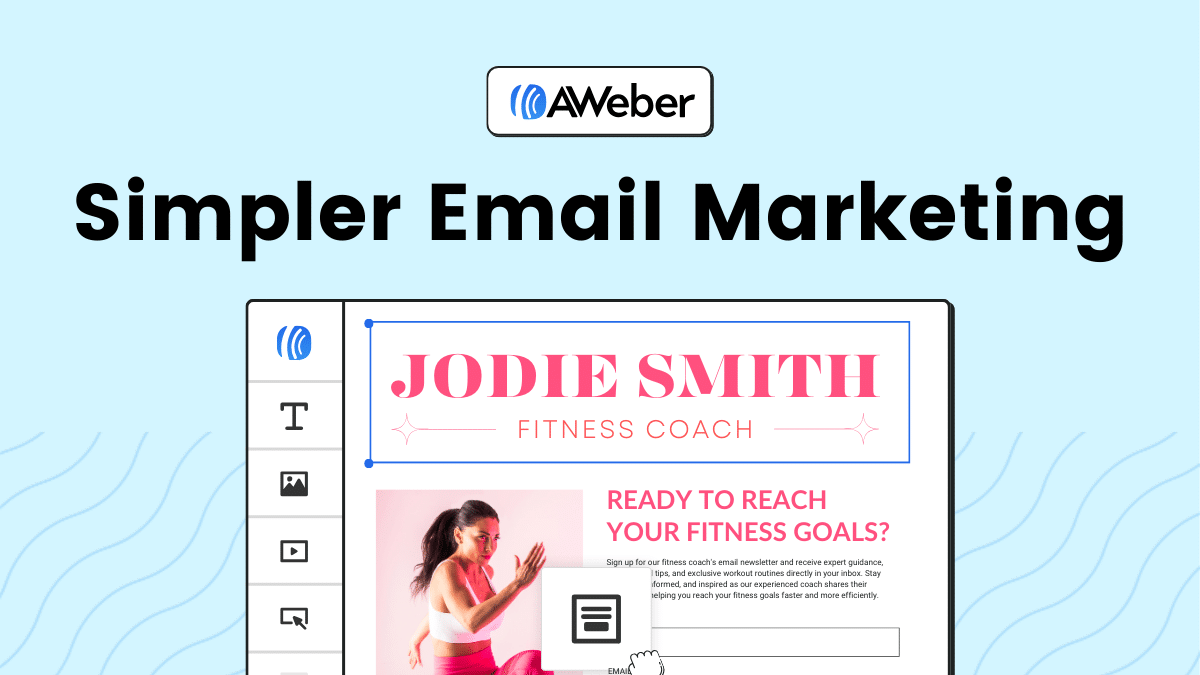 Aweber
| 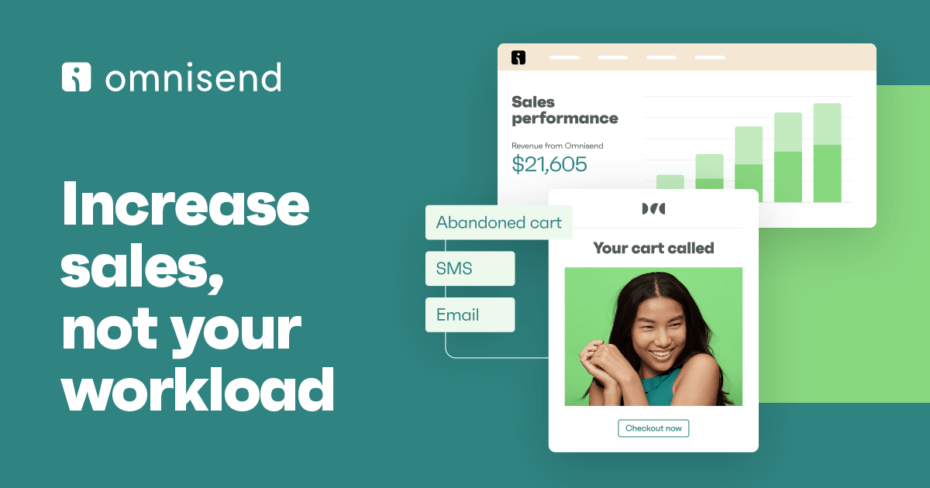 Omnisend
| 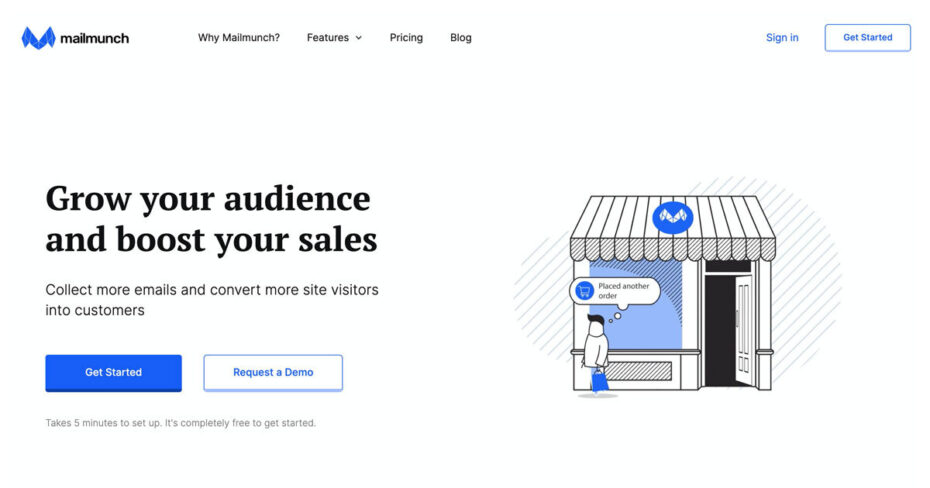 Mailmunch
|
Leveraging Content Marketing for Revenue Growth
Content marketing is a powerful tool for driving revenue growth online. By creating valuable and relevant content, you can attract and retain customers, ultimately increasing your profitability. Effective content marketing involves a strategic approach that includes various forms of content such as blogs, videos, infographics, and more. By diversifying your content, you can reach a broader audience and keep them engaged with your brand.
Most importantly, I suggest focusing on quality over quantity. Producing high-quality content that genuinely addresses the needs and interests of your target audience will result in better engagement and loyalty. Additionally, optimizing your content for search engines ensures that your audience can find you easily, further enhancing your reach and impact.
Blogging to Attract and Retain Customers
Blogging is an excellent way to attract and retain customers through content marketing. By creating high-quality, relevant blog posts, you can establish yourself as an authority in your industry and build trust with your audience. Consistently publishing informative and engaging content helps to drive traffic to your website and keeps your audience coming back for more.
I recommend focusing on topics that are highly relevant to your target audience. Conducting keyword research can help you identify what your potential customers are searching for and tailor your content accordingly. This not only improves your SEO but also ensures that your content resonates with your audience.
Additionally, I strongly believe in the power of storytelling in blogging. Sharing real-life examples, case studies, and personal experiences can make your content more relatable and engaging. This approach helps to humanize your brand and fosters a deeper connection with your readers.
Finally, promoting your blog content through social media and email marketing can significantly increase its reach. Sharing your posts on platforms where your audience is active and sending out regular email newsletters with your latest blog updates can drive more traffic to your website and enhance customer retention.
Video Marketing to Capture Attention
Video marketing is an incredibly effective strategy for capturing attention and driving engagement. With the rise of platforms like YouTube and social media, videos have become a preferred content format for many users. Creating engaging and informative videos can help you reach a wider audience and communicate your message more effectively.
Firstly, focus on creating high-quality videos that provide genuine value to your viewers. Whether it’s tutorials, product reviews, or behind-the-scenes content, ensure that your videos are informative, entertaining, and professionally produced. High-quality videos not only attract more viewers but also reflect positively on your brand.
I advise optimizing your videos for search engines by using relevant keywords in titles, descriptions, and tags. This helps improve your video’s visibility and increases the likelihood of it being discovered by potential customers. Additionally, incorporating strong calls-to-action in your videos can encourage viewers to take the next step, whether it’s visiting your website, subscribing to your channel, or making a purchase.
Furthermore, I suggest leveraging the power of social media to promote your videos. Sharing your content on platforms like Facebook, Instagram, and LinkedIn can increase its reach and engagement. Utilize features like live streaming and stories to interact with your audience in real-time and build a stronger connection with them.
Lastly, analyzing the performance of your videos using analytics tools can provide valuable insights into what works and what doesn’t. By understanding which types of videos resonate most with your audience, you can refine your strategy and create more content that drives engagement and conversions.
Mastering SEO for Enhanced Online Visibility
Mastering SEO is crucial for enhancing your online visibility and driving organic traffic to your website. By optimizing your site and content for search engines, you can improve your rankings and reach a broader audience. This involves both on-page and off-page SEO tactics, which work together to boost your site’s performance.
A well-rounded SEO strategy includes thorough keyword research, proper implementation, and continuous optimization. By understanding and applying these principles, you can ensure that your website remains competitive and continues to attract valuable traffic.
SEO Services Recommendations
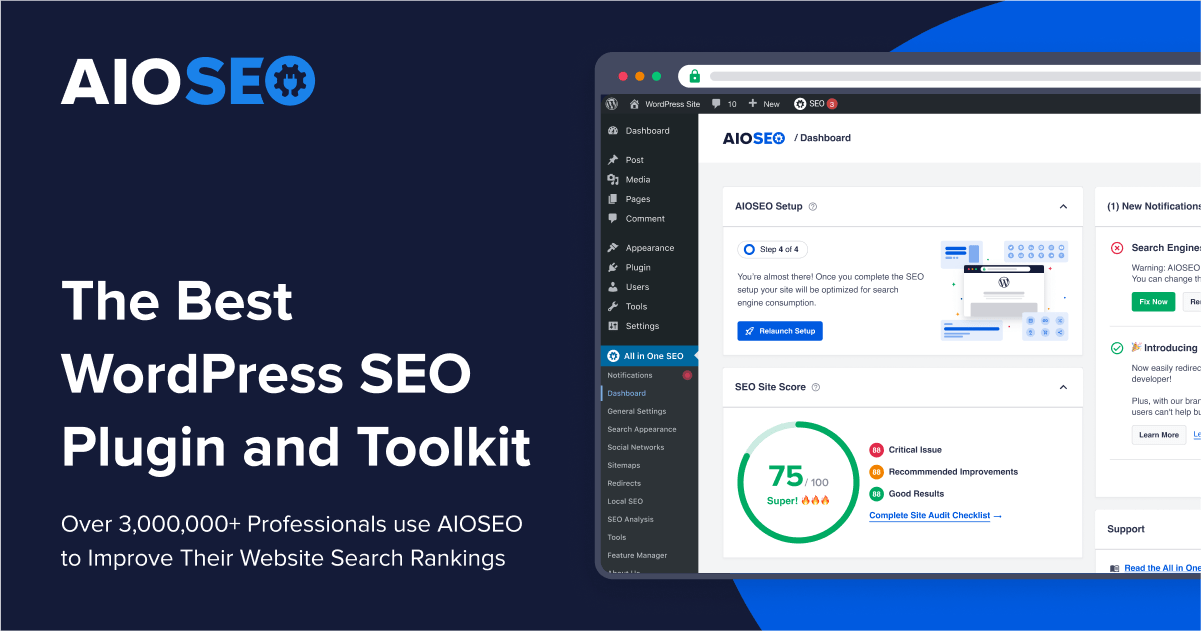 AIOSEO
| 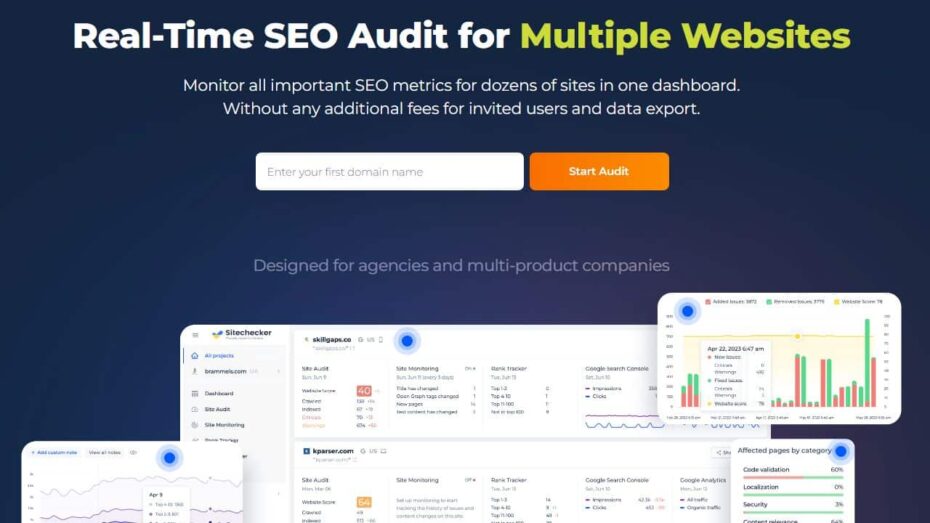 Sitechecker
| 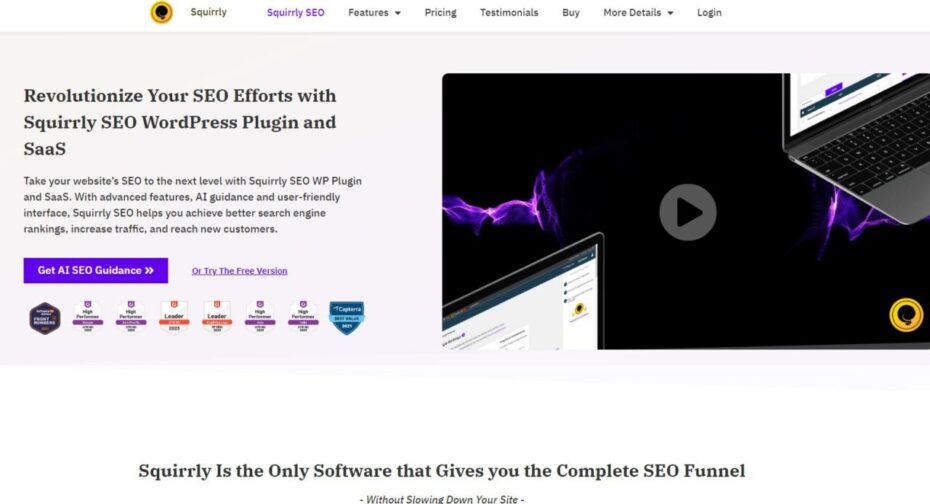 Squirrly
|
Keyword Research and Implementation
Keyword research is the foundation of any successful SEO strategy. Identifying the right keywords helps you understand what your audience is searching for and how to tailor your content to meet their needs. Start by using tools like Semrush or Ahrefs to find relevant keywords with high search volumes and low competition.
Once you have a list of targeted keywords, implement them naturally into your content. This includes your website’s meta tags, headers, and body text. Ensure that the keywords fit seamlessly into your writing to avoid keyword stuffing, which can harm your rankings.
My recommendation is to focus on long-tail keywords. These are longer, more specific phrases that may have lower search volumes but higher conversion rates. Long-tail keywords often attract more qualified traffic, as they are more likely to match the user’s search intent.
Additionally, I strongly believe in the importance of updating your keyword strategy regularly. Search trends and user behavior can change over time, so it’s essential to revisit your keyword research periodically and adjust your content accordingly to maintain relevance and effectiveness.
On-Page and Off-Page SEO Tactics
On-page SEO involves optimizing the elements on your website to improve its visibility and user experience. This includes optimizing title tags, meta descriptions, and header tags. Ensure that each page has a unique and descriptive title that includes your primary keyword. Similarly, your meta descriptions should be compelling and incorporate relevant keywords to encourage click-throughs.
I advise focusing on creating high-quality, engaging content that provides value to your audience. Content is king in SEO, and well-written, informative content can significantly improve your rankings. Use internal linking to connect related pages on your site, which helps search engines understand your content structure and improves user navigation.
Off-page SEO, on the other hand, involves activities that take place outside your website to improve its authority and reputation. Building high-quality backlinks from reputable sites is a crucial aspect of off-page SEO. Reach out to industry influencers and websites for guest posting opportunities and link exchanges to enhance your backlink profile.
Moreover, I suggest leveraging social media to boost your off-page SEO efforts. Sharing your content on social platforms can increase its visibility and drive more traffic to your site. Social signals, such as likes and shares, can indirectly influence your search rankings by increasing your content’s reach and engagement.
Finally, I strongly believe in the power of monitoring and analyzing your SEO performance. Use tools like Google Analytics and Search Console to track your site’s traffic, rankings, and user behavior. Regularly reviewing these metrics allows you to identify areas for improvement and make data-driven decisions to optimize your SEO strategy further.
Harnessing Paid Advertising for Quick Results
Harnessing paid advertising can deliver quick and effective results for businesses looking to increase their online visibility and drive traffic. Paid advertising, such as Pay-Per-Click (PPC) and social media ads, allows you to target specific audiences and achieve measurable outcomes quickly. By investing in these strategies, you can see an immediate boost in website traffic, leads, and sales.
One of the key benefits of paid advertising is its ability to provide instant visibility on search engines and social media platforms. Unlike organic methods, which take time to yield results, paid ads can place your business in front of potential customers almost immediately. This is especially beneficial for new businesses or those looking to promote time-sensitive offers.
Pay-Per-Click (PPC) Advertising Strategies
Pay-Per-Click (PPC) advertising is a highly effective way to drive targeted traffic to your website. With PPC, you only pay when someone clicks on your ad, making it a cost-efficient method for reaching your audience. Setting up a successful PPC campaign requires careful planning and ongoing optimization.
Start by conducting thorough keyword research to identify the terms your potential customers are searching for. Use tools like Google Keyword Planner to find high-volume, low-competition keywords that are relevant to your business. Create compelling ad copy that includes these keywords naturally and highlights the unique benefits of your products or services.
I recommend regularly monitoring your PPC campaigns to ensure they are performing well. Analyze metrics such as click-through rates (CTR), conversion rates, and cost-per-click (CPC) to identify areas for improvement. Adjust your bids and targeting settings based on this data to maximize your return on investment (ROI).
Furthermore, I suggest experimenting with different ad formats and placements. Google Ads offers various options, including search ads, display ads, and shopping ads. Testing different formats can help you determine which ones resonate best with your audience and drive the most conversions.
Finally, my advice is to leverage ad extensions to enhance your PPC ads. Ad extensions provide additional information and links, making your ads more informative and appealing. Extensions such as sitelinks, callouts, and structured snippets can increase your ad’s visibility and improve your CTR.
Social Media Advertising Tips
Social media advertising is another powerful tool for reaching your target audience and driving quick results. Platforms like Facebook, Instagram, and LinkedIn offer sophisticated targeting options that allow you to reach specific demographics, interests, and behaviors. Creating effective social media ads requires a clear strategy and engaging content.
Begin by defining your advertising goals and audience. Understanding who you want to reach and what you want to achieve will guide your ad creation process. Use platform-specific targeting features to narrow down your audience based on factors such as age, location, interests, and online behavior.
I advise creating visually appealing and compelling ad content that captures attention. High-quality images, videos, and graphics can make your ads stand out in users’ feeds. Ensure your ad copy is concise, persuasive, and includes a strong call-to-action (CTA) that encourages users to take the desired action.
Moreover, I recommend testing different ad variations to see what works best. Split testing, or A/B testing, involves creating multiple versions of an ad with slight variations in elements such as images, headlines, or CTAs. Analyzing the performance of these variations helps you identify the most effective components and refine your strategy.
Lastly, my suggestion is to track and analyze your social media ad performance regularly. Use analytics tools provided by the platforms to monitor key metrics such as engagement, click-through rates, and conversions. Based on this data, make informed adjustments to your targeting, ad creative, and budget allocation to optimize your campaigns for better results.
Affiliate Marketing to Boost Earnings
Affiliate marketing is an effective way to boost your earnings by promoting other companies’ products and earning a commission for each sale made through your referral. By leveraging affiliate marketing strategies, you can create a steady stream of passive income. It’s a win-win situation where businesses gain exposure, and you earn money for your promotional efforts.
To succeed in affiliate marketing, it’s essential to choose the right programs and continuously optimize your performance. This involves selecting high-converting products, understanding your audience’s needs, and using analytics to refine your strategies. Implementing these tactics will help you maximize your affiliate marketing revenue.
Affiliate Programs Recommendations
FlexOffers
| MyLead
| ShareASale
|
Choosing Profitable Affiliate Programs
Choosing the right affiliate programs is crucial to your success in affiliate marketing. Not all programs are created equal, and selecting the most profitable ones requires careful research and consideration. Look for programs that offer competitive commissions, reliable tracking, and high-quality products that resonate with your audience.
Start by researching affiliate networks and individual programs that align with your niche. Networks like Amazon Associates, ShareASale, and Commission Junction offer a wide range of products and services to promote. Evaluate the commission rates and payment terms to ensure they meet your financial goals.
I recommend focusing on products and services that you genuinely believe in and would use yourself. Promoting items that you have personal experience with makes your recommendations more authentic and trustworthy. Additionally, high-quality products are more likely to satisfy your audience, leading to better conversion rates and repeat business.
Furthermore, my suggestion is to check the program’s support and resources. Some programs provide marketing materials, training, and dedicated support to help you succeed. These resources can be invaluable in creating effective promotional campaigns and optimizing your affiliate marketing efforts.
Lastly, consider the program’s reputation and track record. Research reviews and testimonials from other affiliates to gauge the program’s reliability and performance. A reputable program with a proven track record of timely payments and accurate tracking is essential for long-term success.
Tracking and Improving Affiliate Performance
Tracking your affiliate performance is essential to understanding what works and what doesn’t in your marketing strategy. Effective tracking allows you to measure your success, identify areas for improvement, and make data-driven decisions to enhance your results. Use analytics tools and tracking software to monitor your campaigns and gather insights.
Begin by setting up tracking links for each of your affiliate promotions. These links help you track clicks, conversions, and other key metrics. Most affiliate programs provide unique tracking URLs that you can use to monitor your performance. Ensure that you use these links consistently across all your promotional channels.
I believe it’s important to regularly analyze your performance data. Look at metrics such as click-through rates (CTR), conversion rates, and average order value to assess the effectiveness of your campaigns. Identify which products and strategies are generating the most revenue and focus your efforts on those areas.
Additionally, my advice is to test different promotional strategies to see what resonates best with your audience. Experiment with various content formats, such as blog posts, videos, social media posts, and email newsletters. A/B testing different headlines, calls-to-action, and visuals can help you optimize your content for better results.
Finally, I suggest maintaining open communication with your affiliate program managers. They can provide valuable insights, tips, and updates on new products or promotions. Building a strong relationship with your program managers can lead to exclusive opportunities and higher commission rates, further boosting your affiliate marketing earnings.
Building and Monetizing an Online Store
Building and monetizing an online store is an exciting opportunity to tap into the growing e-commerce market. With the right strategies, you can create a successful online business that generates significant revenue. This involves selecting the right e-commerce platform, optimizing your store for search engines, and implementing effective marketing strategies.
Creating an online store requires careful planning and execution. From choosing a user-friendly platform to designing a visually appealing website, every step plays a crucial role in attracting and retaining customers. By focusing on these elements, you can build a store that not only looks good but also drives sales and customer loyalty.
E-commerce Platforms for Easy Setup
Choosing the right e-commerce platform is essential for the success of your online store. Platforms like Shopify, WooCommerce, and BigCommerce offer robust features that simplify the setup process and provide a solid foundation for your business. These platforms are designed to be user-friendly, even for those with limited technical skills.
Start by evaluating your specific needs and budget. Shopify, for instance, is known for its ease of use and excellent customer support, making it a great choice for beginners. WooCommerce, on the other hand, is a plugin for WordPress, offering more customization options but requiring a bit more technical know-how.
I recommend considering the scalability of the platform as your business grows. You want a platform that can handle increased traffic and sales without compromising performance. BigCommerce is known for its scalability and is a good option if you anticipate rapid growth.
Additionally, my advice is to look for platforms that offer a range of integrations and plugins. These tools can enhance your store’s functionality, from SEO and marketing to inventory management and customer service. Choosing a platform with a wide range of integrations can save you time and money in the long run.
Finally, ensure that the platform you choose provides strong security features. Protecting your customers’ data is paramount, and a secure platform will help you build trust and credibility with your audience. Look for features like SSL certificates, secure payment gateways, and regular updates to keep your store safe.
Marketing Your Online Store
Marketing your online store effectively is crucial to attracting visitors and converting them into customers. There are several strategies you can use to promote your store and drive sales, from search engine optimization (SEO) to social media marketing and email campaigns.
Start by optimizing your website for search engines. Use relevant keywords in your product descriptions, blog posts, and meta tags to improve your visibility on search engines like Google. High-quality content that addresses your customers’ needs and interests will also help you rank higher in search results.
I suggest leveraging social media platforms to promote your products and engage with your audience. Platforms like Instagram, Facebook, and Pinterest are particularly effective for e-commerce businesses. Share high-quality images and videos of your products, run contests and giveaways, and use paid ads to reach a broader audience.
Moreover, I advise investing in email marketing to keep your customers informed and engaged. Building an email list allows you to send personalized offers, product updates, and valuable content directly to your subscribers. Regular email campaigns can help you nurture relationships and encourage repeat purchases.
Another strategy to consider is collaborating with influencers in your niche. Influencers can help you reach a larger audience and build credibility for your brand. Choose influencers whose followers align with your target market and create authentic partnerships that showcase your products in a positive light.
Lastly, I strongly believe in the power of customer reviews and testimonials. Encourage your satisfied customers to leave reviews on your website and social media pages. Positive feedback not only builds trust but also influences potential buyers to make a purchase. Highlighting testimonials on your site can significantly boost your conversion rates.
Analytics and Adjustments for Continuous Improvement
Analytics and adjustments are critical for the continuous improvement of your online marketing efforts. By regularly reviewing your performance data, you can identify areas for enhancement and make informed decisions to optimize your strategies. This ongoing process helps you stay competitive and responsive to changes in the market and consumer behavior.
Utilizing tools like Google Analytics and conducting A/B testing can provide valuable insights into your website’s performance and the effectiveness of your marketing campaigns. These techniques allow you to fine-tune your approach, ensuring that your efforts yield the best possible results.
Utilizing Google Analytics for Insights
Google Analytics is an indispensable tool for gaining insights into your website’s performance. It provides comprehensive data on user behavior, traffic sources, and conversion rates, helping you understand how visitors interact with your site. By analyzing this data, you can make data-driven decisions to improve your online presence.
To start, set up Google Analytics on your website and configure it to track key metrics relevant to your business. This includes page views, bounce rates, session duration, and goal completions. Regularly monitoring these metrics will give you a clear picture of your website’s strengths and areas for improvement.
I recommend diving into the Audience, Acquisition, and Behavior reports to gain deeper insights. The Audience report helps you understand who your visitors are, including their demographics and interests. The Acquisition report shows how visitors find your site, while the Behavior report reveals how they interact with your content.
Furthermore, my advice is to use the Goals feature in Google Analytics to track specific actions you want visitors to take, such as making a purchase or signing up for a newsletter. Setting up goals allows you to measure your conversion rates and evaluate the success of your marketing efforts.
Lastly, I suggest using the Ecommerce report if you run an online store. This report provides detailed information on your sales performance, including product performance, transaction data, and average order value. Analyzing this data can help you identify top-selling products and opportunities for upselling and cross-selling.
A/B Testing for Marketing Campaigns
A/B testing, or split testing, is a powerful method for optimizing your marketing campaigns. By comparing two versions of a web page, email, or advertisement, you can determine which one performs better and drives more conversions. This data-driven approach helps you make informed decisions and continuously improve your marketing strategies.
Begin by identifying a specific element you want to test, such as a headline, image, or call-to-action button. Create two versions of this element and divide your audience into two groups. Each group sees a different version, and you track their responses to see which performs better.
I think it’s important to test one variable at a time to ensure accurate results. Testing multiple elements simultaneously can make it difficult to determine which change impacted performance. Focus on a single variable, analyze the results, and then move on to the next test.
Moreover, I recommend using tools like Google Optimize or Optimizely to facilitate your A/B testing. These platforms integrate with Google Analytics and provide robust features for setting up and managing tests. They also offer detailed reports that help you understand the impact of your changes.
Additionally, my suggestion is to run tests long enough to gather sufficient data. A common mistake is ending tests prematurely, which can lead to inconclusive results. Ensure that your test runs for a significant period to achieve statistical significance and reliable insights.
Finally, I strongly believe in the value of iterating based on your test results. Use the insights gained from A/B testing to refine your marketing campaigns and implement the winning variations. Continuously testing and optimizing different elements of your campaigns will help you achieve better results over time.


